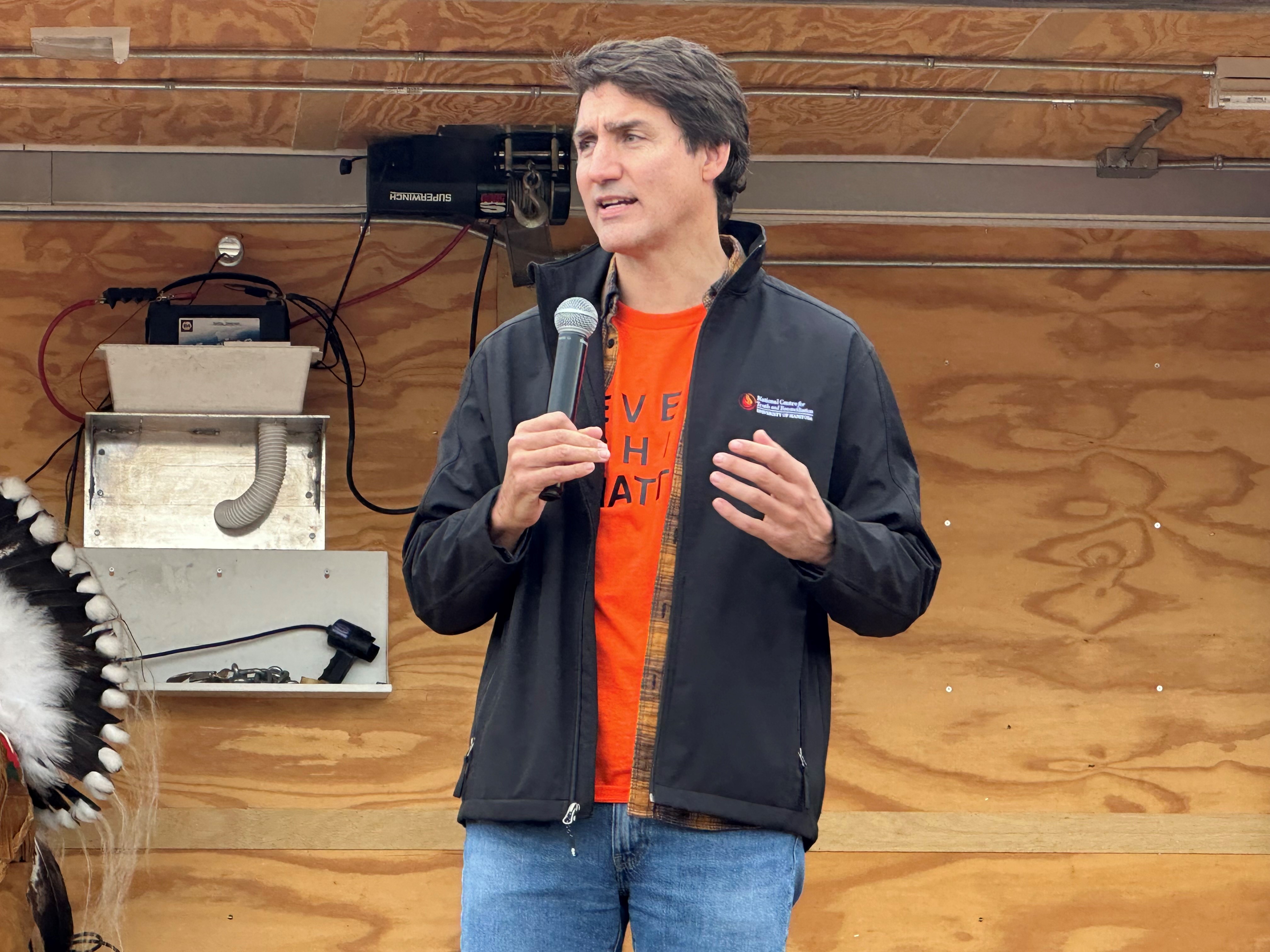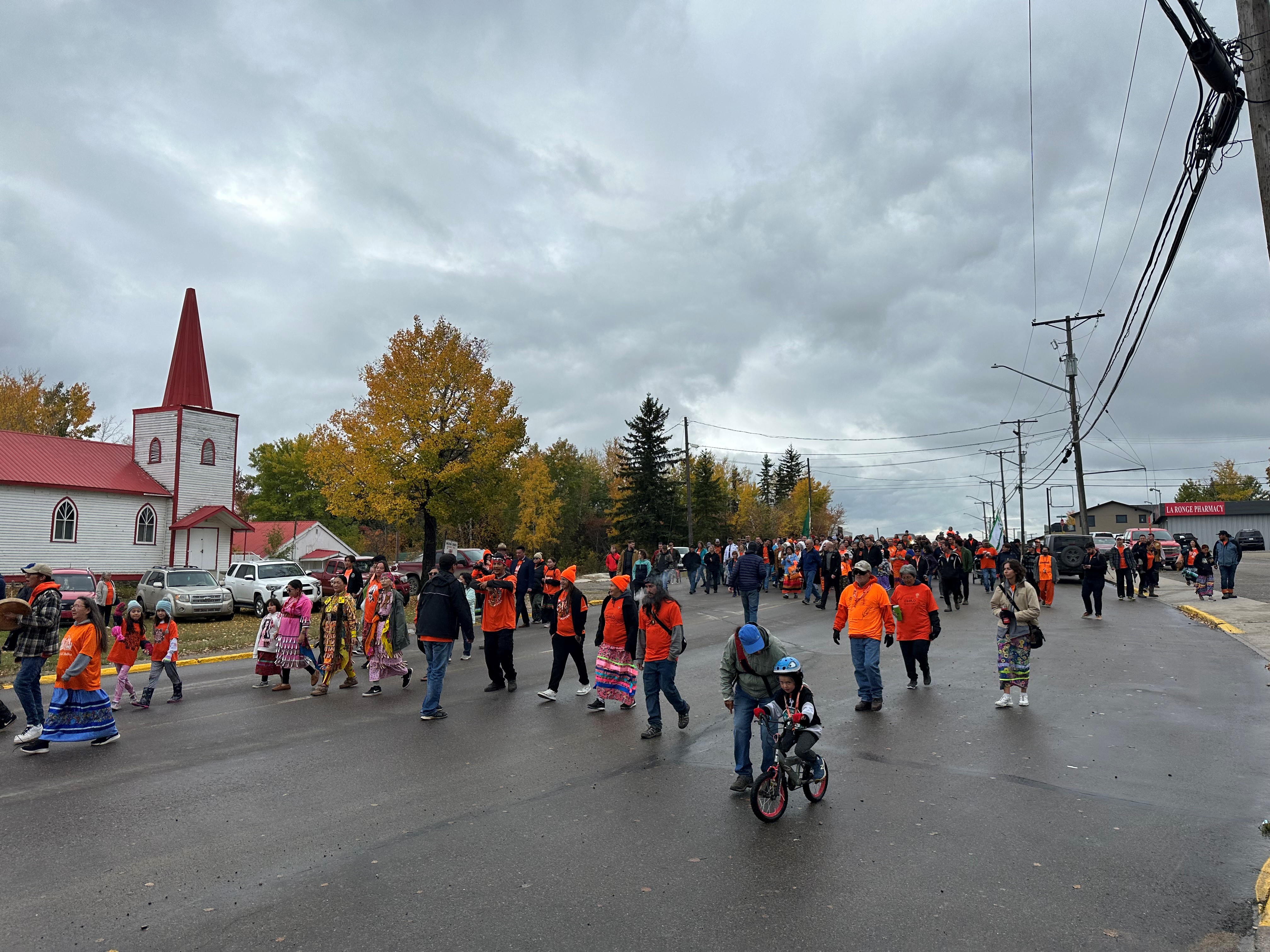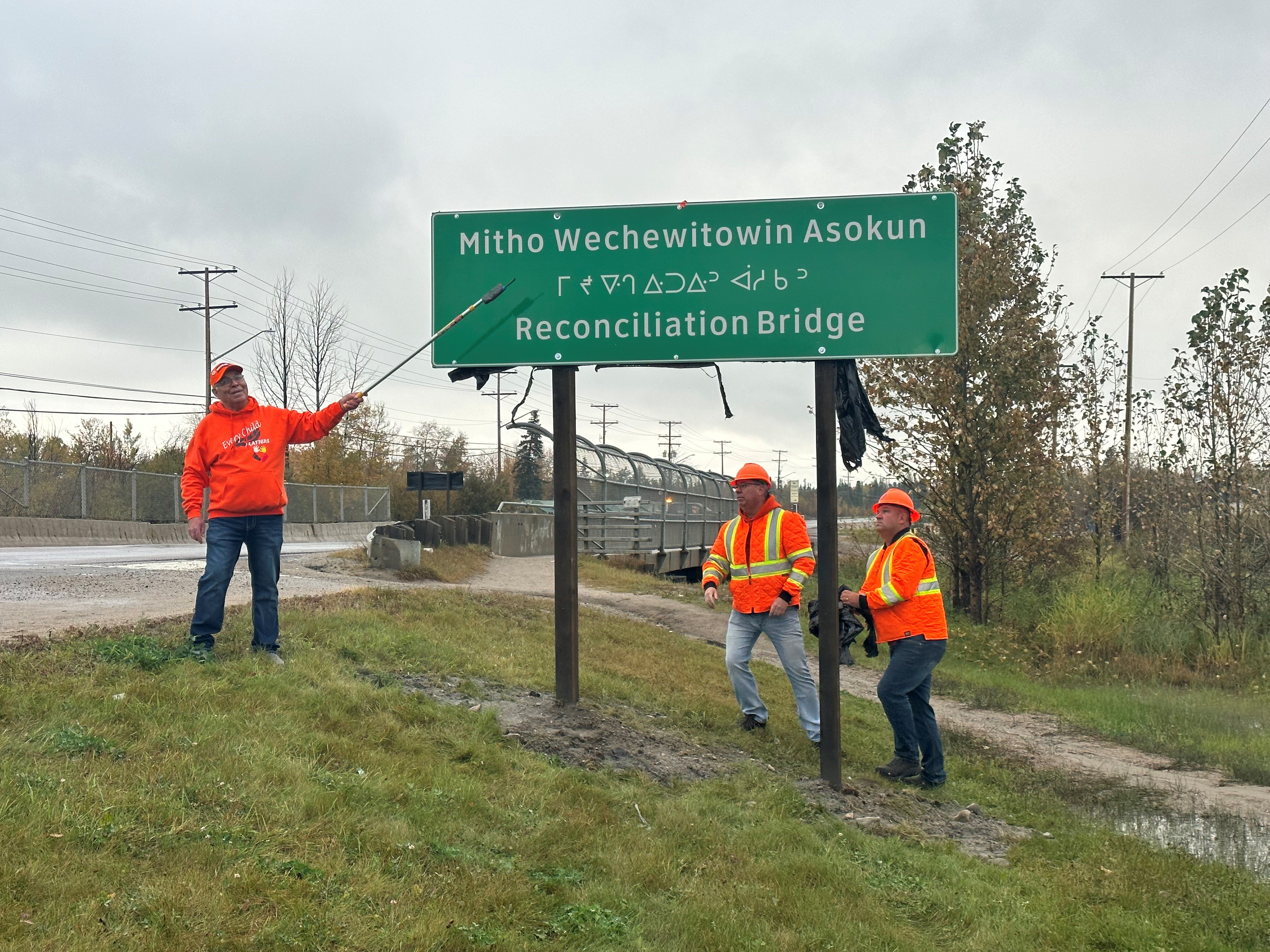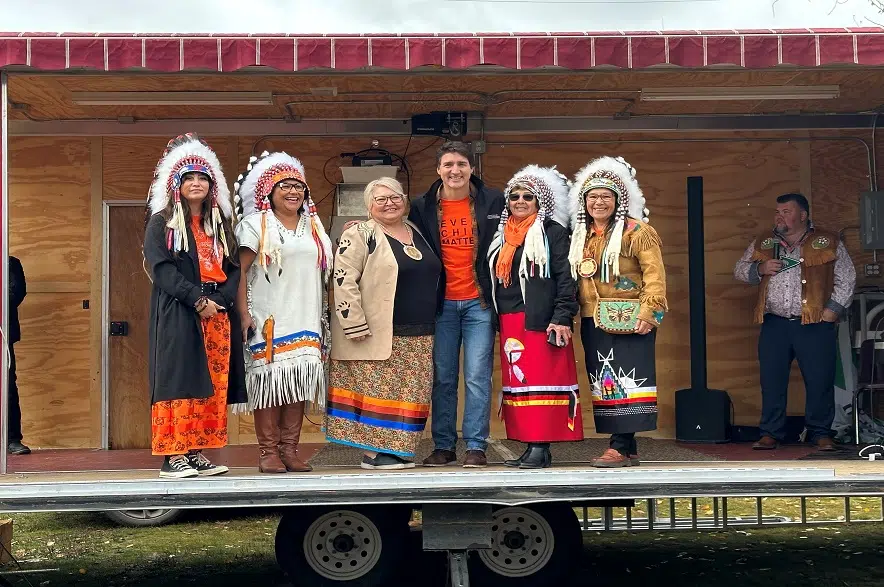Prime Minister Justin Trudeau joined residents of the tri-communities on Saturday to commemorate the National Day for Truth and Reconciliation.
Standing at the former site of the Lac La Ronge All Saints Residential School, he told those in attendance that the day is an opportunity to recognize the sadness, anger and frustration that is the legacy of intergenerational trauma of residential schools. He said it’s a challenging day and a day for all Canadians to confront the country’s past.
Prime Minister Justin Trudeau toured the Woodland Wellness Centre during his visit in La Ronge on Saturday. Watch here: pic.twitter.com/MyG5HodZf2
— Derek Cornet (@saskjourno) September 30, 2023
X/Derek Cornet
“There are many who would like us simply to brush over the past and pretend it didn’t happen because they feel that talking about truth and reconciliation, marking this day somehow, diminishes us as a country,” Trudeau said.
Trudeau explained the goal of residential schools was to eliminate Indigenous People’s, identity, culture and knowledge. He noted it was also about teaching Indigenous kids that they had no value to this land, adding fortunately past governments failed and there are strong Indigenous communities across Canada today.
“Reconciliation is the action and the responsibility of every single person who lives today on Turtle Island,” Trudeau said.


“Every single one of us have to understand, not just what happened in the past, but the impacts that that past has in very real things today, whether it’s trauma, or addictions or cycles of poverty and marginalization. Those are the results of deliberate policies governments of Canada and other orders of government took on, and that’s why it’s important that every year we see more and more people wearing orange shirts in honour of Phyllis Webstad, and of all Indigenous school survivors.”
Lac La Ronge Indian Band Chief Tammy Cook-Searson thanked Trudeau for attending the event and she told attendees that the day is about residential school survivors, their families and the children that didn’t make it home. She talked about how her grandparents, parents and herself attended residential schools.
“We were made to feel less than like we didn’t matter,” she said.
“My parents were probably thinking ‘yeah our kids are in a better place, they are safe, they are looked after, they are getting an education, they are getting the best care,’ because that’s what you think. You think that because it’s a program run by the government, it’s good for the kids, it’s a safe place, but it wasn’t. It wasn’t a safe place.”
Cook-Searson also talked about the Woodland Wellness Centre and how it’s a place of healing. She said it’s a place where all people are welcome and how it will have a meaningful impact when it comes to mental health and addictions in northern Saskatchewan.
Following the ceremony, attendees gathered for a traditional meal and entertainment while Trudeau and Cook-Searson toured the Woodland Wellness Centre. The tour concluded with a closed-door meeting.
Air Ronge bridge named Reconciliation Bridge
The National Day for Truth and Reconciliation was also marked by the naming of a bridge in Air Ronge to Reconciliation Bridge.
The bridge is located along Highway 2 and spans the Montreal River where the current meets Lac La Ronge. A new sign was unveiled Saturday during a special ceremony with Cook-Searson, local mayors, MLAs, as well as Elder Tom Roberts.
Roberts, who sits on Air Ronge council as an Elder advisor, came up with the idea about two years ago.

“Every day we drive back and forth and we never think about how important [it is and] the connection between the three communities of Air Ronge, La Ronge and the reserve. Without the bridge, we would be lost,” he said. “It’s an emotional day for me to see what I am seeing here today.”
Roberts mentioned the bridge holds a lot of meaning to him as a residential school survivor. He remembers passing over the bridge on the bus on the way to residential school in Septembers and how crossing it was always a solemn moment.
“We would come back in mid-June and that little bridge we had in the 60s must have been shaking because we all yelled, 60 of us in that bus, ‘we are home,’” he said.
Reconciliation Bridge is a vital lifeline for not only the tri-communities, but northern Saskatchewan. It provides access to services, transport of necessities to northern communities and supports the natural resources industry as well.
“We feel that naming the bridge will underscore why both the bridge itself and, on a grander scale, reconciliation is vitally important to our collective paths forward,” said Air Ronge Mayor Julie Baschuk.
In coming years, a second bridge will be added at the location, doubling the capacity to move people and goods through the area. Also, new lighted pathways will be installed so people can travel safely on foot and on bikes.
–
derek.cornet@pattisonmedia.com







